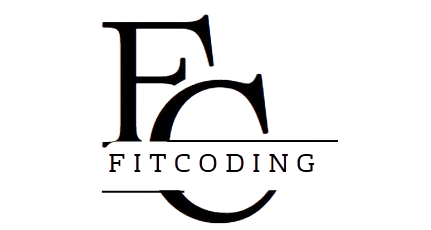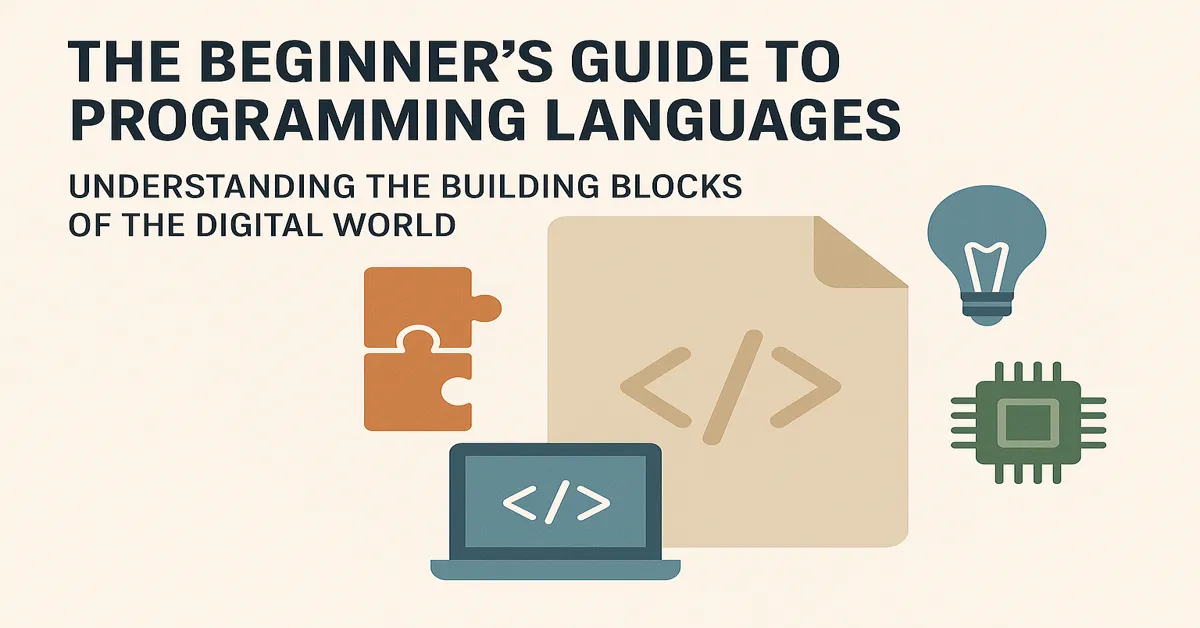In the age of smartphones, self-driving cars, artificial intelligence, and automated homes, one invisible force binds it all: code. Behind every app, every website, every connected device lies a language. Not the kind spoken on streets or in literature, but a constructed set of instructions designed to tell machines what to do. For those just stepping into this digital realm, understanding programming languages can feel like trying to navigate a foreign land without a map. This article is that map—a detailed, approachable, and comprehensive guide for beginners – Beginner Guide to Programming Languages.
This isn’t a list of top ten languages nor a clickbait guide to becoming a millionaire coder overnight. It is a serious, practical introduction to the world of programming languages: what they are, how they work, why they differ, and how a beginner can wisely choose their entry point into coding.
What is a Programming Language?
At its core, a programming language is a formal language comprising a set of instructions that produce various outputs. Programmers use these languages to write code that computers can interpret and execute. Unlike human languages, programming languages are structured to be unambiguous and precise – Beginner Guide to Programming Languages.
But there isn’t just one language. Much like natural languages, there are thousands—each created for specific goals, philosophies, and functionalities. Some excel at controlling hardware; others simplify building web interfaces. Some prioritize speed; others prioritize readability.
Read: Why All Languages Are Important in Coding: A Comprehensive Look at Diversity in Programming
Why Are There So Many Programming Languages?
There isn’t a single programming language because not all problems are the same. The diversity of software tasks requires diverse tools. Here are some primary factors that distinguish programming languages:
- Level of abstraction: Low-level languages like Assembly interact directly with hardware. High-level languages like Python abstract away hardware details.
- Programming paradigm: Some languages favor object-oriented programming (e.g., Java), others functional programming (e.g., Haskell), and many support multiple paradigms (e.g., Python, JavaScript).
- Application domain: Languages are often built with specific uses in mind—SQL for databases, HTML/CSS for web structure and styling, R for statistics.
The Anatomy of a Beginner’s Journey
Starting to learn programming is like learning a new instrument. You need to understand the theory, practice it daily, make mistakes, and iterate. Here are the core steps:
- Understand what coding is
- Learn basic programming concepts
- Choose the right language for your goals
- Practice writing real code
- Build simple projects to reinforce learning
- Join a community and seek feedback
Let’s walk through the foundational languages most suited for beginners and why each deserves attention.
1. Python: The Gentle Giant
Python is often recommended as the first language for beginners—and for good reason. Created in the late 1980s by Guido van Rossum, Python emphasizes readability, simplicity, and flexibility.
Why Beginners Love Python:
- Clean syntax: Code reads almost like English.
- Vast ecosystem: Used in web development, data science, automation, AI, and more.
- Huge community: Support is plentiful and resources are abundant.
# A simple Python program
print("Hello, world!")Python teaches fundamental concepts like variables, loops, and conditionals without overwhelming syntax.
2. JavaScript: The Language of the Web
If Python is the gentle entry, JavaScript is the path to the most visible coding results. It powers the interactive aspects of websites and is essential for web development.
Why Learn JavaScript:
- Every browser runs it
- You can see immediate results
- Paves the way to learn frameworks like React, Vue, and Node.js
console.log("Hello, world!");While JavaScript can be quirky and inconsistent, it remains one of the most practical languages to know.
3. HTML & CSS: Web’s Structural Foundation
While not programming languages in the strictest sense, HTML (Hypertext Markup Language) and CSS (Cascading Style Sheets) are essential for any aspiring web developer.
Why They Matter:
- HTML structures web content
- CSS styles it
- You need them before any JavaScript interactivity
<!DOCTYPE html>
<html>
<head><title>Hello</title></head>
<body>
<h1>Hello, world!</h1>
</body>
</html>These tools are irreplaceable for front-end development.
4. Scratch: Coding for Absolute Beginners
Developed by MIT, Scratch is a visual programming language ideal for children and true first-timers.
Key Features:
- Drag-and-drop blocks
- Immediate visual feedback
- Helps grasp logic, loops, and events
While you won’t build commercial applications with Scratch, it builds the right mindset to learn more advanced languages.
5. Java: The Professional’s Stalwart
Java has been around since 1995 and remains widely used in enterprise, Android development, and backend systems.
Java Basics:
- Strongly typed and object-oriented
- Used in schools and corporations alike
- Great for learning programming rigor
public class HelloWorld {
public static void main(String[] args) {
System.out.println("Hello, world!");
}
}Beginners with long-term ambitions in mobile or enterprise development should consider Java early.
6. C: The Power and the Pain
C is the mother of many modern languages, including C++, Java, and Python. It offers a closer look at how computers actually operate.
Learn C if You Want To:
- Understand memory and system-level programming
- Build efficient, low-level programs
- Transition to embedded systems or game development
#include <stdio.h>
int main() {
printf("Hello, world!\n");
return 0;
}C is powerful, but less forgiving—ideal for learners who enjoy technical depth.
7. Ruby: Elegant and Beginner-Friendly
Ruby, especially through its Rails framework, became famous for its developer-friendly syntax and rapid prototyping capabilities.
Why Ruby Is Beginner-Worthy:
- Readable syntax
- Focused on developer happiness
- Still used in startups and small teams
puts "Hello, world!"Though not as dominant as it once was, Ruby remains a worthy beginner language.
8. SQL: The Language of Data
While most beginners focus on logic and syntax, understanding data querying is essential. SQL (Structured Query Language) is how we communicate with databases.
Use SQL to:
- Query, insert, update, or delete database records
- Analyze data efficiently
- Power backend systems
SELECT * FROM users WHERE active = true;SQL isn’t a language you build entire applications with, but it’s a necessary companion.
Understanding Programming Concepts
No matter which language you choose, key concepts will appear across all of them:
- Variables: Store data (e.g., name, age).
- Loops: Repeat actions (e.g., for or while).
- Functions: Encapsulate code logic to be reused.
- Conditionals: Make decisions (if/else logic).
- Data types: Define the kind of data (string, integer, boolean).
Grasping these fundamentals is more important than mastering syntax.
How to Choose the Right Language
Ask Yourself:
- What do you want to build? (Websites, apps, games, data analysis?)
- Are you learning for fun, a career, or education?
- Do you prefer visual or text-based learning?
- Are you more comfortable with structured or flexible environments?
| Goal | Recommended Languages |
|---|---|
| Web development | HTML, CSS, JavaScript, Python |
| Mobile apps | Java, Kotlin, Swift |
| Data analysis | Python, R, SQL |
| Games | C++, C#, Python |
| Automation | Python, Bash |
| Embedded systems | C, C++ |
Start small, stay curious, and avoid “language loyalty.” Good programmers learn multiple languages over time.
Best Practices for Beginners
- Write code daily: Even small practice builds familiarity.
- Read others’ code: Open-source projects offer great learning opportunities.
- Use free resources: Online platforms like Codecademy, FreeCodeCamp, and W3Schools are invaluable.
- Build projects: Start with simple ones (e.g., to-do list, calculator).
- Ask questions: Join coding forums, subreddits, or local coding meetups.
Avoiding Common Pitfalls
- Don’t jump between too many languages.
- Don’t worry about memorizing everything.
- Don’t compare your progress to others.
- Don’t fear failure—bugs are part of learning.
What Comes After?
Once you’re comfortable with one language:
- Try learning a second language to explore new paradigms.
- Dive deeper into frameworks and tools specific to your interest.
- Contribute to open-source projects.
- Build a portfolio.
- Consider formal education or certifications.
Coding is a marathon, not a sprint. Start with curiosity, nurture it with practice, and fuel it with purpose.
Conclusion: A Language for Every Learner
The world of programming is vast, but it isn’t exclusive. Every language exists to solve a problem and every beginner brings a new perspective. Whether you fall in love with the simplicity of Python or the structure of Java, what matters is starting.
Choosing your first language is less about picking the perfect one and more about committing to learning how to think computationally. Once that switch is flipped, the syntax becomes secondary. The journey begins not with the line you write, but the mindset you build – Beginner Guide to Programming Languages.
There has never been a better time to learn coding. Tools are accessible, communities are welcoming, and possibilities are endless. The only thing left is to begin – Beginner Guide to Programming Languages.
FAQs
1. Which programming language should a complete beginner start with?
Answer: Python is widely recommended for beginners due to its simple syntax, readability, and versatility across fields like web development, data science, and automation.
2. Are HTML and CSS programming languages?
Answer: Technically, no. HTML and CSS are markup and style sheet languages, respectively. However, they are foundational for web development and essential for beginners to learn.
3. How long does it take to learn a programming language?
Answer: It depends on the language and your learning pace, but most beginners can grasp fundamentals in 2–3 months with consistent daily practice.
4. Do I need to learn math to become a programmer
Answer: Basic math helps, but for many programming roles—like web development or scripting—advanced math is not required. Logic and problem-solving matter more.
5. Can I learn multiple programming languages at once?
Answer: While possible, it’s best to start with one language to build a solid foundation before branching out. Overloading early can cause confusion.











